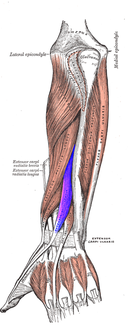- Home
- About Us
- TSPT Academy
- Online Courses
-
Resources
- Newsletter
- Business Minded Sports Physio Podcast
- Day in the Life of a Sports PT
- Residency Corner
-
Special Tests
>
-
Cervical Spine
>
- Alar Ligament Test
- Bakody's Sign
- Cervical Distraction Test
- Cervical Rotation Lateral Flexion Test
- Craniocervical Flexion Test (CCFT)
- Deep Neck Flexor Endurance Test
- Posterior-Anterior Segmental Mobility
- Segmental Mobility
- Sharp-Purser Test
- Spurling's Maneuver
- Transverse Ligament Test
- ULNT - Median
- ULNT - Radial
- ULNT - Ulnar
- Vertebral Artery Test
- Thoracic Spine >
-
Lumbar Spine/Sacroiliac Joint
>
- Active Sit-Up Test
- Alternate Gillet Test
- Crossed Straight Leg Raise Test
- Extensor Endurance Test
- FABER Test
- Fortin's Sign
- Gaenslen Test
- Gillet Test
- Gower's Sign
- Lumbar Quadrant Test
- POSH Test
- Posteroanterior Mobility
- Prone Knee Bend Test
- Prone Instability Test
- Resisted Abduction Test
- Sacral Clearing Test
- Seated Forward Flexion Test
- SIJ Compression/Distraction Test
- Slump Test
- Sphinx Test
- Spine Rotators & Multifidus Test
- Squish Test
- Standing Forward Flexion Test
- Straight Leg Raise Test
- Supine to Long Sit Test
-
Shoulder
>
- Active Compression Test
- Anterior Apprehension
- Biceps Load Test II
- Drop Arm Sign
- External Rotation Lag Sign
- Hawkins-Kennedy Impingement Sign
- Horizontal Adduction Test
- Internal Rotation Lag Sign
- Jobe Test
- Ludington's Test
- Neer Test
- Painful Arc Sign
- Pronated Load Test
- Resisted Supination External Rotation Test
- Speed's Test
- Posterior Apprehension
- Sulcus Sign
- Thoracic Outlet Tests >
- Yergason's Test
- Elbow >
- Wrist/Hand >
- Hip >
- Knee >
- Foot/Ankle >
-
Cervical Spine
>
- I want Financial Freedom
- I want Professional Growth
- I want Clinical Mastery
 Overview As autonomous practitioners the ability to perform differential diagnosis is more important than ever. Proper differential diagnosis is the difference between treating an impairment versus treating the cause of a patient's problem. It is the difference between decreasing a patient's pain today and eliminating their movement dysfunction forever. Part of this process should include assessing the joints above or below the region of dysfunction. In this post, I want to pose this question: How do you determine if a patient is having ulnar nerve adverse neural tension or a movement dysfunction consistent with C8-T1 radiculopathy?  Common Features On initial examination, both diagnoses will have a similar presentation. In both scenarios the patient may have positive upper extremity neural tension tests, weakness and/or muscle atrophy of the hand intrinsic muscles, pain along the ulnar nerve distribution, and potentially cervical segmental nerve dysfunction. How do you differentiate? Two key features that will distinguish the difference between the peripheral nerve tension and C8-T1 radiculopathy are 1. test the strength of the extensor pollicis longus (EPL) and 2. perform specific sensation testing of the affected upper extremity. The Difference While the EPL muscle arises from the C8 nerve root (similar to ulnar nerve), it is innervated by the posterior interosseous nerve (a branch of the radial nerve). If the EPL muscle is intact, the C8 nerve root must be functioning normally. Therefore, the dysfunction is most likely a peripheral ulnar nerve entrapment. If the nerve root is the region of compromise all muscles, not only those innervated by the ulnar nerve, will be affected. The second method of assessment is checking the pattern of sensory loss. Ulnar nerve sensory loss affects the medial one and a half digits. Contrarily, the C8 nerve root can have pain from the lower scapula down the posteromedial aspect of the arm into the ring and little finger. The differences may seem subtle, but if a practitioner only suspects ulnar nerve tension, they are neglecting the cervical spine. As part of your differential diagnose make sure to assess the joint above and below the dysfunction. Now who remembers how to MMT the EPL... -Jim
0 Comments
Leave a Reply. |
Dr. Brian Schwabe's NEW Book in partner with PaleoHacks!
Learn residency-level content on our
Insider Access pages We value quality PT education & CEU's. Click the MedBridge logo below for TSPT savings!Archives
July 2019
Categories
All
|






 RSS Feed
RSS Feed